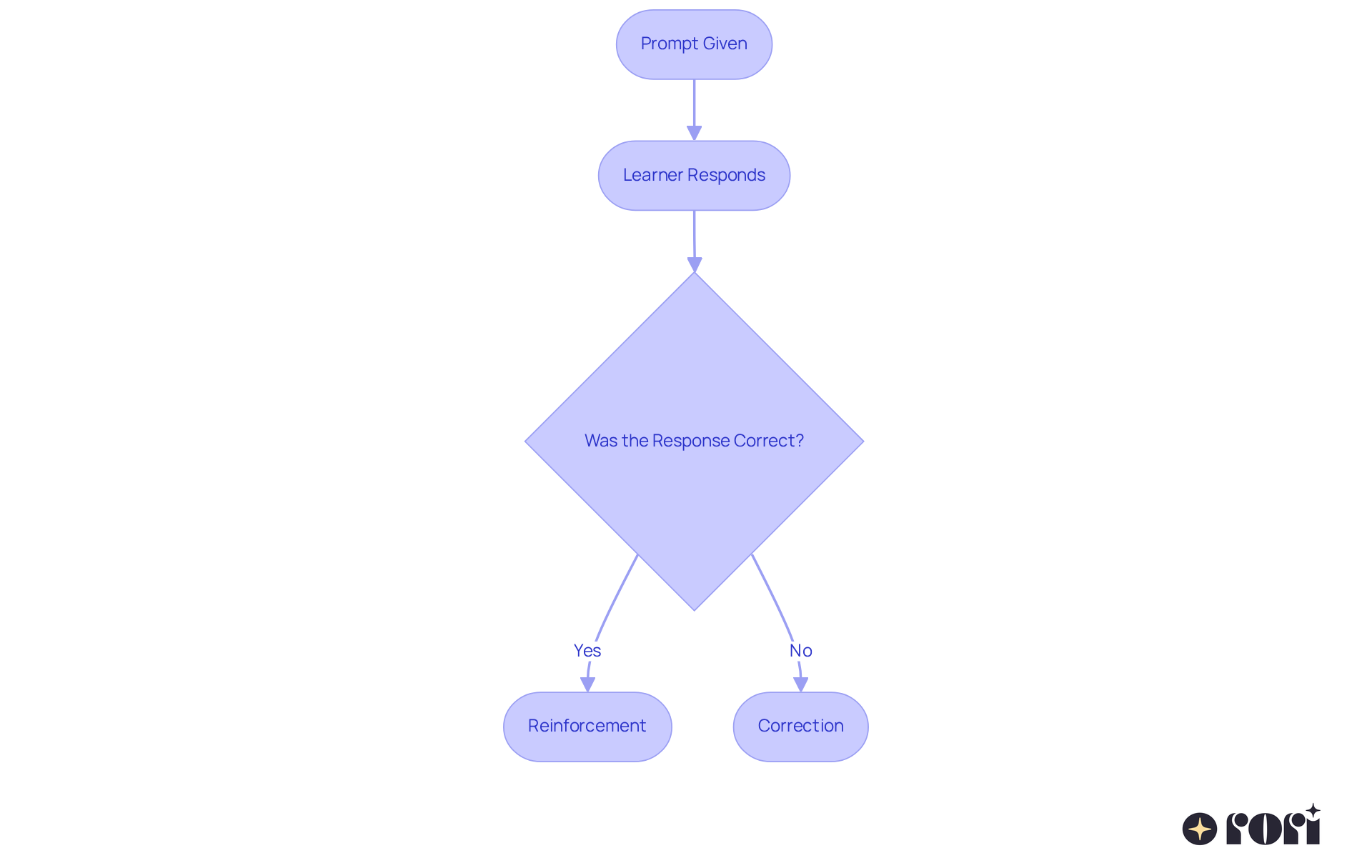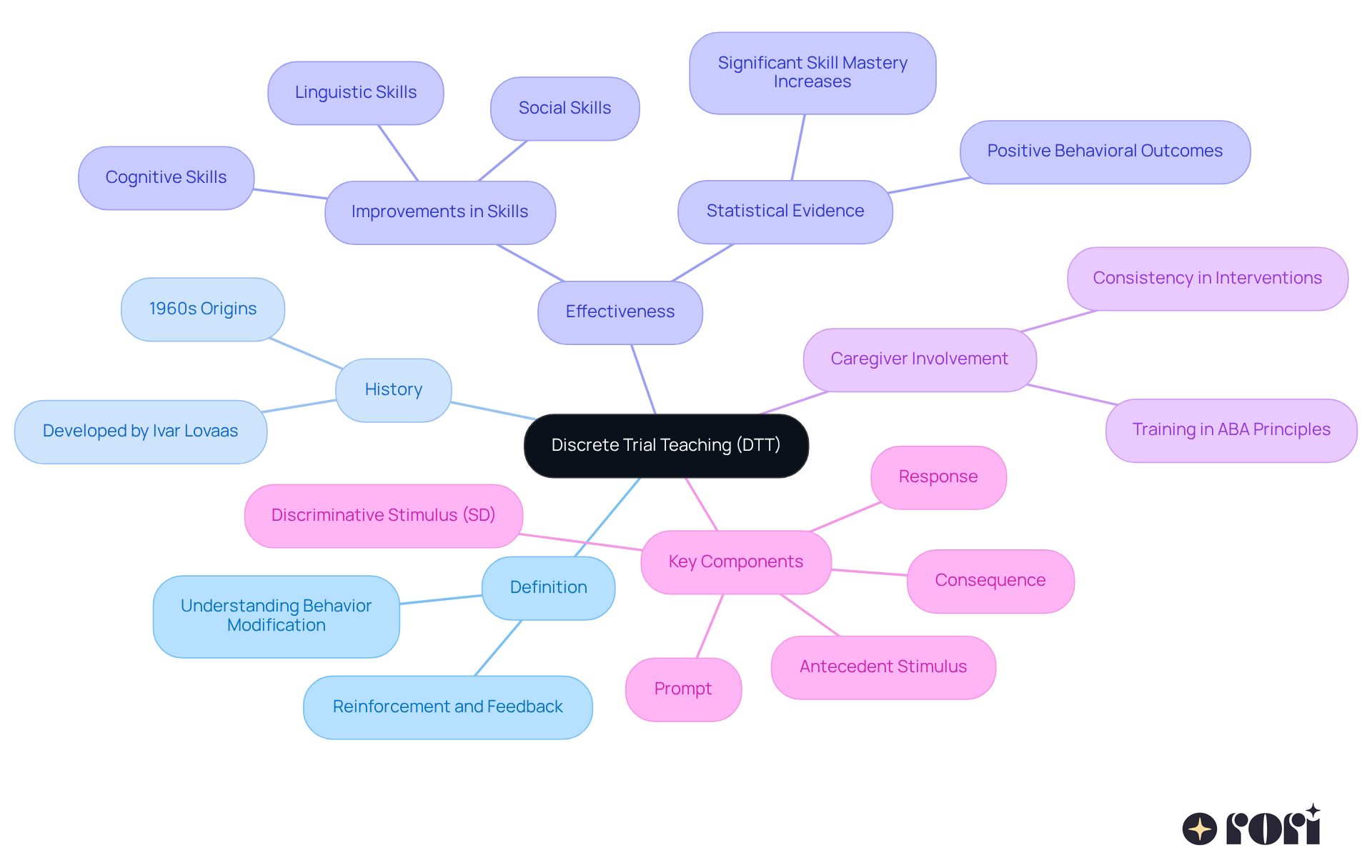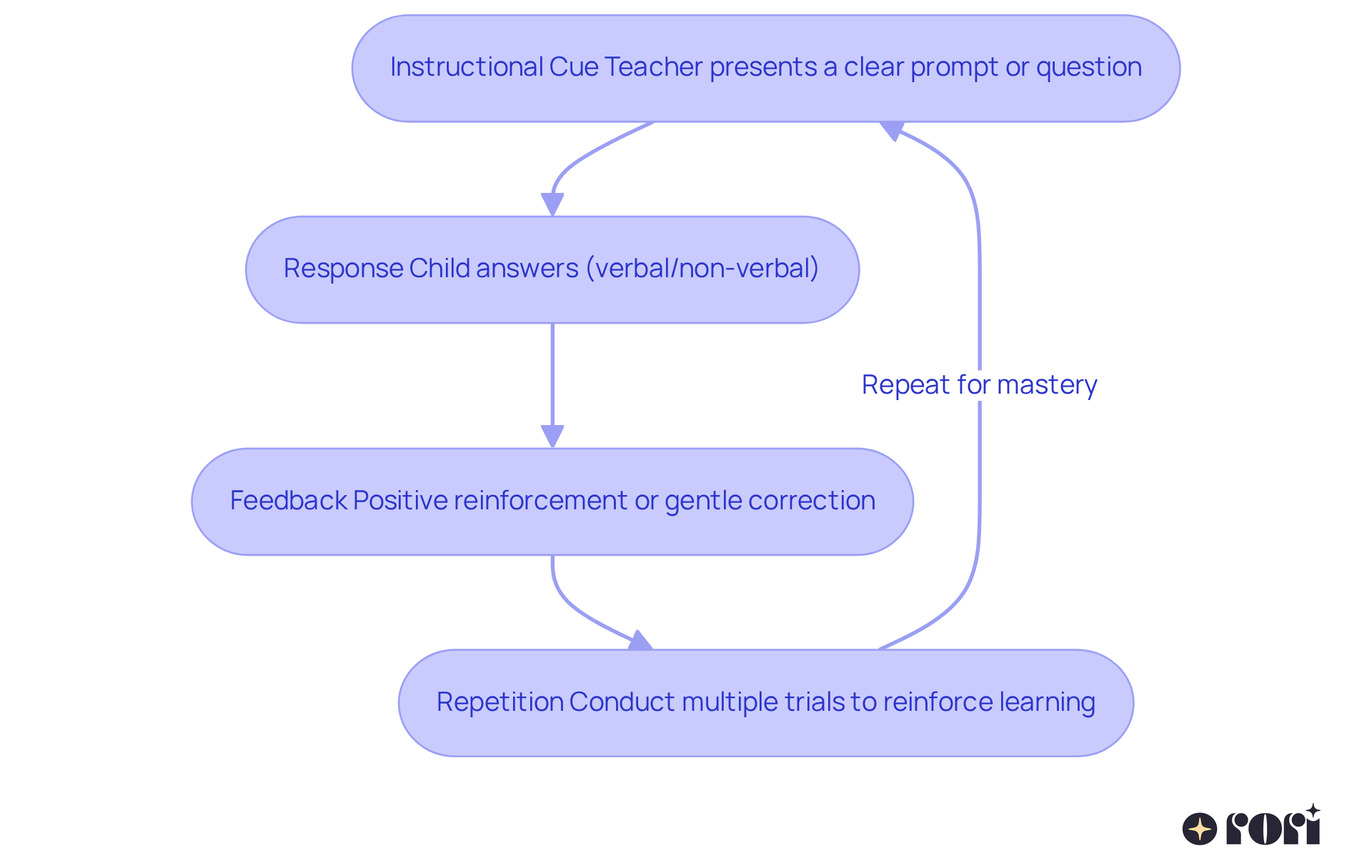Have you ever felt overwhelmed by the challenges your child faces? Discrete Trial Teaching (DTT) in Applied Behavior Analysis (ABA) is here to help! This structured instructional method breaks down complex tasks into manageable parts, making learning and skill acquisition more effective for children with autism.
What’s really exciting about DTT is how it uses systematic reinforcement and tailored interventions. Many parents have seen significant improvements in their child’s communication, social skills, and adaptive behaviors through this therapy. Imagine your child feeling more confident in social situations or expressing their needs more clearly!
Let’s explore this together! If you’re curious about how DTT can make a difference in your child’s life, we’re here to help you every step of the way!
In the ever-evolving world of autism therapy, there’s so much to discover! 🌟 Innovative approaches are popping up to support children on their unique developmental journeys. One method that really shines is Discrete Trial Teaching (DTT). It’s a powerful tool within Applied Behavior Analysis (ABA) that offers structured and systematic instruction, tailored just for individual needs.
As parents and caregivers, we often seek effective strategies to enhance our children’s communication and social skills. This brings us to an important question: how can DTT transform the learning experience for children with autism? What makes it such a crucial part of their therapeutic progress? Let’s explore this together!
The discrete trial teaching ABA definition outlines a systematic instructional method within Applied Behavior Analysis (ABA) that breaks down complex tasks into smaller, manageable components. Each skill is taught through repeated attempts, enabling focused understanding and reinforcement. The discrete trial teaching ABA definition outlines a clear sequence: a prompt is given, the learner responds, and a consequence follows—either reinforcement for correct responses or correction for errors. This organized approach aligns with the discrete trial teaching ABA definition and is particularly beneficial for individuals with autism, as it creates a stable learning environment that fosters knowledge growth and behavioral improvement.
Recent studies have highlighted how effective the discrete trial teaching ABA definition can be in enhancing various skills among children with autism. For instance, research indicates that young individuals receiving intensive DTT—up to 40 hours a week—show significant progress, with nearly half achieving typical educational and cognitive performance after just two years of intervention. Plus, a flexible approach to discrete trial teaching ABA definition allows therapists to customize their methods based on each child’s responses, thereby boosting the overall effectiveness of the therapy.
Experts point out that the discrete trial teaching ABA definition not only assists in teaching essential skills such as joint attention and communication but also prepares children for more advanced abilities, including language development. The structured nature of the discrete trial teaching ABA definition aids in maintaining focus and motivation, making it a valuable tool in autism therapy. To successfully implement the discrete trial teaching ABA definition, skilled therapists are crucial—they can customize the method to meet each child’s unique needs, ensuring that the learning process is both effective and engaging.
If you’re a parent navigating this journey, remember that you’re not alone. Let’s explore this together and find the best ways to support your child’s development!

The discrete trial teaching ABA definition is a cornerstone of Applied Behavior Analysis (ABA), which focuses on understanding and modifying behavior through careful observation and intervention. Developed by Ivar Lovaas back in the 1960s, DTT was created to meet the growing need for organized teaching strategies tailored for individuals with autism. This method emphasizes reinforcement as a key part of learning, offering prompt feedback that helps improve skills. The structured nature of DTT not only makes tracking progress clear but also allows for personalized interventions based on individual needs, making it an invaluable tool for clinicians, educators, and caregivers.
Lovaas's pioneering research laid the groundwork for the widespread use of DTT in autism therapy, demonstrating its effectiveness in enhancing cognitive, linguistic, and social skills among children on the spectrum. Studies show that DTT has been successfully used in various settings, with notable improvements in target behaviors. For instance, children undergoing DTT often show significant progress in areas like collaboration, assertiveness, and self-regulation, which underscores its role in promoting independence and enhancing quality of life.
The active participation of caregivers in the DTT process is so important! By grasping key ABA principles like reinforcement, prompting, and data collection, caregivers can offer valuable support at home, complementing professional interventions and ensuring consistency. This informed approach leads to better behavioral outcomes, as caregivers align their efforts with therapeutic strategies. Statistical analyses reveal a steady increase in the mastery of specific skills over time, with many individuals achieving significant milestones through DTT. Interestingly, the median wait time for children to begin receiving DTT services is about 51 days, highlighting the urgency of early intervention. As Natalie Justice wisely notes, 'For young individuals with autism spectrum disorder (ASD), early intensive intervention is essential.' As the field continues to evolve, the discrete trial teaching ABA definition within the broader context of ABA remains a vital approach for supporting individuals with autism and their families. Plus, DTT consists of five key components:
All of which work together to enhance the teaching process.

The discrete trial teaching ABA definition describes a systematic method designed to promote learning in individuals with autism. It all starts with an Instructional Cue, where the teacher presents a clear prompt or question to the student, signaling the beginning of the trial. Next comes the Response phase, where the child answers, whether verbally or non-verbally. Immediately after, the teacher provides Feedback, which can be positive reinforcement for correct answers or gentle corrections for incorrect ones. This feedback is crucial! Studies show that instructors using DTT effectively increased their proper usage rates to between 63-80% after training, leading to significant improvements in student understanding and engagement. In fact, when feedback and follow-up conditions were compared to baseline, student knowledge acquisition and instructional efficiency saw remarkable enhancements, highlighting the power of feedback in DTT.
The Repetition phase involves conducting multiple trials to reinforce learning and ensure mastery of the technique. This organized repetition allows for a gradual increase in complexity as the learner becomes more skilled, making DTT a highly effective approach for skill acquisition. Research indicates that with the right training and feedback, instructors can achieve proficiency ratings of 90% by the second session and 97-100% by the fourth session, emphasizing the importance of effective implementation.
In practice, DTT can include various Instructional Cues, such as visual prompts or verbal questions, and the feedback can be tailored to each student's responses. For example, if a student accurately recognizes a color, the instructor might cheerfully say, 'Great job! That's red!' If the response is incorrect, the teacher gently corrects the student, guiding them toward the right answer. This methodology not only enhances education but also fosters a supportive atmosphere that encourages safe risk-taking and social interaction—essential for building independence and confidence in autistic individuals.
At Rori Care, we truly believe that the patient is at the heart of everything we do, and our approach to DTT reflects this commitment. By empowering caregivers with ABA principles and strategies, we enhance support for children's behavioral goals through active involvement and data collection. Effective implementation of the discrete trial teaching ABA definition is vital for facilitating learning and development in students with developmental disabilities, especially when caregivers are engaged in the process. Importantly, ABA therapy is the only scientifically proven treatment for autism that is covered by insurance, ensuring families have access to this vital support. Our clinical leadership team is dedicated to fostering neurodiversity and maintaining the highest standards of care in our therapeutic practices.

The advantages of Discrete Trial Teaching (DTT) in autism therapy are truly remarkable! Many studies highlight its effectiveness in boosting communication skills, social interactions, and adaptive behaviors. With DTT’s organized approach, therapists can closely monitor progress, allowing for tailored interventions that meet each child’s unique needs.
During DTT sessions, prompt feedback plays a crucial role in reinforcing learning and encouraging positive behaviors essential for development. Isn’t it amazing that children who participate in DTT often show significant advancements in skill acquisition compared to those who don’t? For instance, one study found that DTT led to notable improvements in self-control, communication, and cooperative play among individuals with Autism Spectrum Disorder (ASD). This really underscores the importance of the discrete trial teaching ABA definition as a foundational method in Applied Behavior Analysis (ABA) therapy.
Moreover, the structured nature of DTT not only enhances learning but also helps children engage more in social situations. This makes it an invaluable resource for both parents and therapists in supporting children with autism. Let’s explore this together and see how DTT can make a difference in your child’s journey!

As we wrap up our discussion on Discrete Trial Teaching (DTT), it’s clear that this approach plays a crucial role in helping children with autism thrive. By breaking down complex tasks into bite-sized pieces, DTT creates a structured and welcoming learning environment. This not only supports skill acquisition but also prepares children for the next steps in their development. It’s like building a strong foundation for a house—essential for what comes next!
Throughout this journey, we’ve seen how effective DTT can be. Research shows that when parents and caregivers actively engage in this process, children can make remarkable strides in cognitive, linguistic, and social skills. Imagine the joy of seeing your child communicate better or build friendships! The involvement of caregivers is vital, reinforcing what’s learned at home and ensuring consistency. This partnership is truly a game-changer.
Moreover, DTT isn’t just about individual skills; it embodies a commitment to supporting neurodiversity and improving the quality of life for families. By embracing DTT, caregivers are empowered, and they can collaborate with skilled therapists to meet each child's unique needs. As we continue to learn more about DTT, it’s exciting to think about the positive impact it can have on the developmental journey of children with autism.
So, let’s explore this together! Engaging with DTT can pave the way for a brighter future for our little ones. We’re here to help you every step of the way!
What is Discrete Trial Teaching (DTT) in Applied Behavior Analysis (ABA)?
Discrete Trial Teaching (DTT) is a systematic instructional method within ABA that breaks down complex tasks into smaller, manageable components, teaching each skill through repeated attempts.
What is the sequence of Discrete Trial Teaching?
The sequence of DTT involves giving a prompt, the learner responding, and then a consequence follows—either reinforcement for correct responses or correction for errors.
Who benefits most from Discrete Trial Teaching?
Discrete Trial Teaching is particularly beneficial for individuals with autism, as it creates a stable learning environment that fosters knowledge growth and behavioral improvement.
How effective is Discrete Trial Teaching for children with autism?
Research shows that young individuals receiving intensive DTT—up to 40 hours a week—can show significant progress, with nearly half achieving typical educational and cognitive performance after just two years of intervention.
Can Discrete Trial Teaching be customized?
Yes, DTT allows therapists to customize their methods based on each child’s responses, enhancing the overall effectiveness of the therapy.
What skills does Discrete Trial Teaching help develop?
DTT assists in teaching essential skills such as joint attention and communication, and it also prepares children for more advanced abilities, including language development.
What role do therapists play in Discrete Trial Teaching?
Skilled therapists are crucial in implementing DTT, as they can customize the method to meet each child’s unique needs, ensuring an effective and engaging learning process.
What should parents know about supporting their child’s development with DTT?
Parents should know that they are not alone in this journey and can explore ways to support their child's development effectively alongside professionals.